The latest iOS 18 and macOS Sequoia brings a very interesting and useful iPhone mirroring feature. This is a brand-new addition that allows you to use your iPhone from your Mac screen, check iPhone notifications, use iPhone apps, and do much more. This is undoubtedly one of the best features of macOS Sequoia that can make your life easier. In this article, we will show you how to mirror your iPhone screen to your Mac. Without further ado, let’s get started with the iPhone mirroring feature.
Prerequisites for using iPhone mirroring feature
- First, iPhone mirroring requires an iPhone running iOS 18 and a Mac running macOS Sequoia.
- A Mac with an Apple Silicon chip or T2 security chip.
- Both iPhone and Mac must be signed in with the same Apple ID and have two-factor authentication enabled.
- The iPhone and Mac must be near each other with Bluetooth and Wi-Fi enabled on both devices for the initial connection.
- You cannot use iPhone mirroring when using AirPlay or Sidecar.
- iPhone mirroring only works when your iPhone is locked and not in use.
Once you have set the requirements, let’s move on to the next sections and learn how to use iPhone mirroring on macOS Sequoia.
How to Enable iPhone Mirroring in macOS Sequoia
With the iPhone Mirroring feature in macOS Sequoia, you can fully access your iPhone directly on your MacBook display, without needing your iPhone nearby. Follow the steps below to use your iPhone on your Mac wirelessly:
- Once you have installed iOS 18 and macOS Sequoia, you will see an iPhone Mirroring Icon in your Mac’s Dock. Open it. Alternatively, open Finder > Applications and press command+shift+. (period) to show Applications. Here, you’ll see the iPhone Mirroring app.
- Click on the Continue button.
- NOW, unlock your iPhone.
- On your Mac, click To start.

- To maintain privacy, iPhone Mirroring is locked by default. The first time you open iPhone Mirroring on Mac, you’ll need to authenticate your Touch ID or enter your Mac password. For future sessions, you can choose to Ask every time Or Automatically authenticate.

- Once authenticated, you will see your iPhone screen on your Mac.
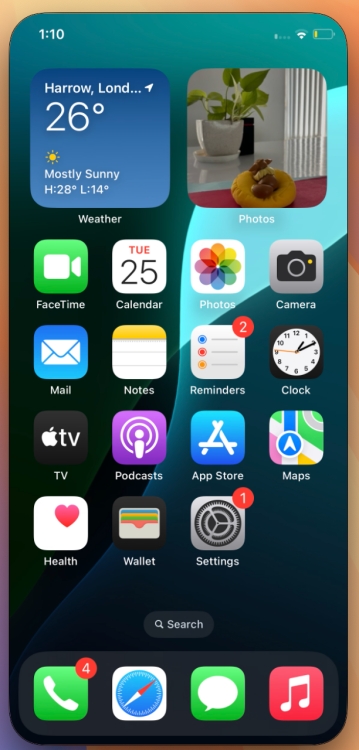
- When iPhone mirroring is used, your iPhone displays a message saying “iPhone in use”.

- Once your iPhone screen appears on your Mac, you can interact with your iPhone apps right on your Mac, even when your iPhone is in another room.
How to Use iPhone Mirroring in iOS 18 and macOS Sequoia
Once your iPhone content is displayed on your Mac screen, you can click to interact with it, just like you tap your finger on your iPhone. You can use your Mac’s trackpad or mouse to wirelessly interact with your iPhone and its apps. Simply swipe left or right on your Mac’s trackpad to move around your iPhone’s Home screen. There are also dedicated buttons to switch to the Home screen and app switcher on your iPhone.
Additionally, shared clipboard and file drag and drop functionality are not available in the iPhone mirroring feature at this time.
To access your iPhone’s home screen, Click on the mirrored screen, point the Mac pointer up, and click on the “applications” icon. You can also use the “Order + 1” keyboard shortcut. To access the app switcher on your iPhone, Click on the “App Switcher” icon in the same upper right corner. You can also use the “Order + 2” keyboard shortcut.

HAS Use Spotlight Search on Your iPhone can click the Search button at the bottom of the Home screen or swipe down using your Mac’s keyboard. You can also tap “Order + 3” on your Mac keyboard.
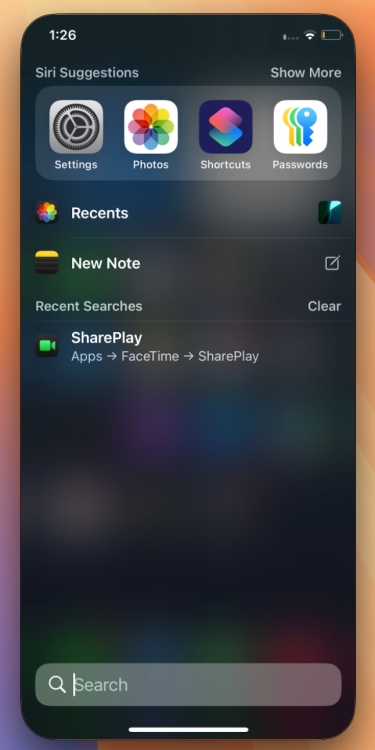
Interestingly, iPhone mirroring does not provide access to the Notification Center, Control Center, or Siri through the iPhone.
You can use your Mac keyboard to type emails, messages, and other documents on your iPhone. You can also track notifications from your iPhone right on your Mac.

With iPhone mirroring, you can receive notifications from your iPhone on your Mac. They will appear in the Notification Center alongside your Mac notifications, but you will see a small phone icon indicating that it is an iPhone notification. When you click on a notification on your Mac, it will open directly in the app on your iPhone. You can easily take action and interact with notifications.
You can also watch videos with iPhone Mirroring. Keep in mind that you can’t force your iPhone to switch to landscape orientation. That said, when you open a video app (or any other app) that requires landscape viewing, your iPhone Mirroring session automatically switches to landscape mode. As a result, I can easily watch YouTube videos in full-screen mode with iPhone Mirroring.
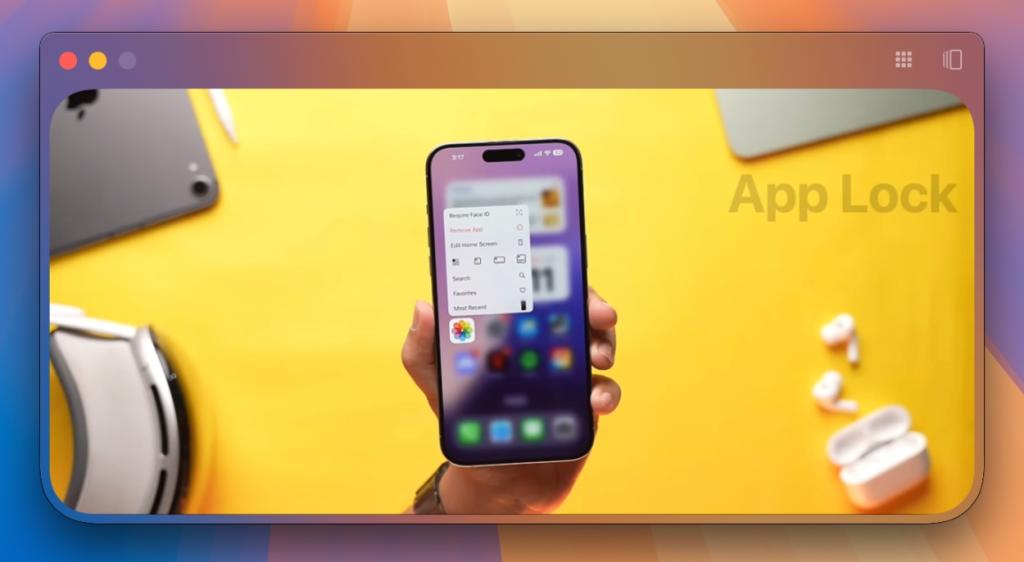
How to Stop Mirroring iPhone to Mac
To stop mirroring your iPhone to your Mac, click iPhone Mirroring in the top menu bar, then click Quit iPhone Mirroring.

When you unlock your iPhone, iPhone mirroring will stop automatically. Your Mac will show that the iPhone is in use and advise you to lock your iPhone and click Try again to continue mirroring the iPhone screen.
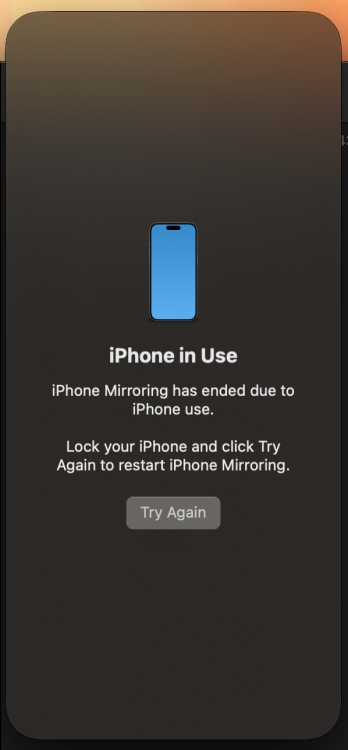
Once your iPhone is locked, click on Try again and it will mirror your iPhone to your Mac again.
How to Switch from iPhone to iPhone Mirroring
If you want, you can use another iPhone signed in with the same Apple ID. On your Mac, open System Settings -> Desktop & Docking and scroll down to the Widgets section. You will see a drop-down list for iPhone. You can use this to configure which iPhone you want to use with iPhone mirroring.
You can also use another Mac to mirror your iPhone using iPhone Mirroring. On your iPhone, go to Settings -> General -> AirPlay & Continuity -> iPhone Mirroring and choose a Mac running macOS Sequoia.
How to Remove Mac from iPhone Mirroring List
Sometimes, your family or friends may want to use your Mac. To protect your privacy and make sure no one else can mirror your iPhone to your Mac, you can remove your Mac from the list of devices that can mirror your iPhone. Here’s how:
- Open the Settings application on your iPhone and visit the General section.
- Now press AirPlay and Continuity.
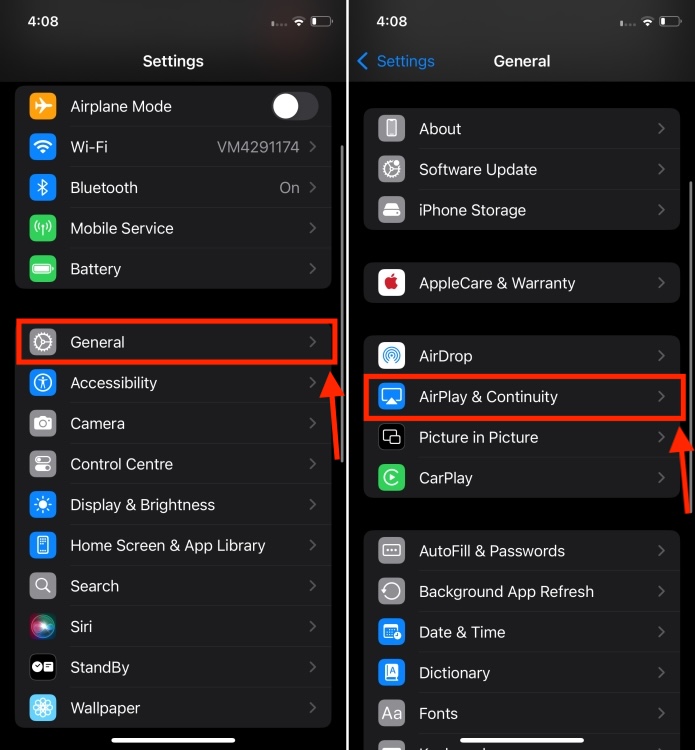
- Then press iPhone MirroringSwipe left on the name of the Mac you want to remove and press the button DELETE button.

- Once you’ve done this, you’ll need to follow the process again to mirror your iPhone to your Mac.
This is how you can use iPhone Mirroring in macOS Sequoia. iPhone Mirroring works perfectly in the stable version of iOS 18 and macOS Sequoia. The initial connection is quick and you can maintain a session for as long as you want. Eventually, iPhone mirroring will also let you move your photos, videos, and files between your iPhone and Mac. This feature wasn’t enabled in the beta, and it’s also not available in the public release of macOS SequoiaApple plans to add drag-and-drop functionality later this year.
Have you tried mirroring your iPhone to your Mac? Did you like this feature? We would love to hear your thoughts in the comments below.
Read More:-








